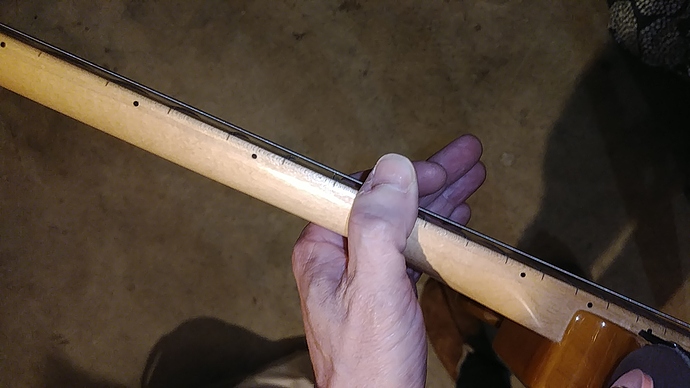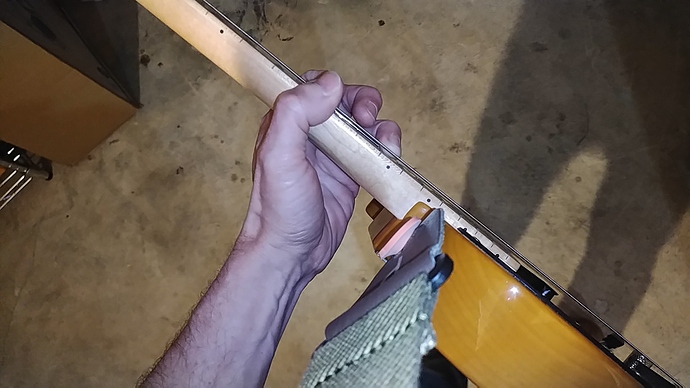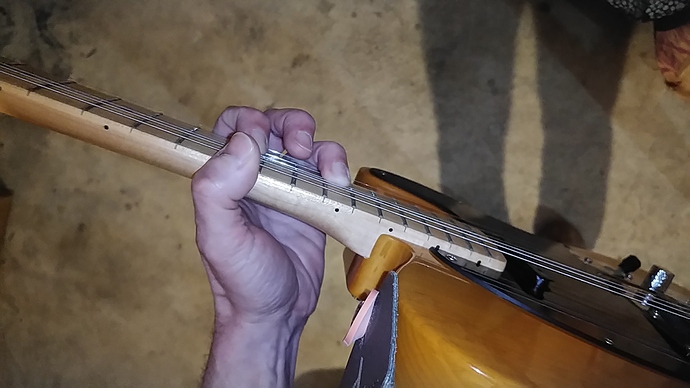Slightly peeking out. The pushing is mostly coming from the base of the index finger. It makes a little shelf for the neck to rest on, at exactly the place Billy’s doing it up above. The thumb curl adds some stability, but isn’t absolutely required most of the time.
There is very little pushing actually required, though. It’s more like ‘guiding’. (Both in the sense that it guides the neck through space, but also in that it guides my hand along the neck. If I don’t lose contact with the guitar on that spot at the base of my index, I can slide to a faraway fret position without looking, with noticeably more accuracy.) My guitar rests easily at any angle from totally front-facing to totally right-facing without help. I don’t need to push on it with my right arm at all for the neck to angle forward. I just move it there and it stays. I play most comfortably at about a 45 degree angle. These are all just observations about myself, not prescriptions for you. Just find easy.
I always felt like my problem was neck dive, not forward angle (that’s what I’m calling it), because of the supination thing. That went away with this grip because I usually don’t have to supinate any more. When I absolutely need classical position, I use a subtle lean. Maybe it’s actually similar to the Joey Taffola thing, now that I think about it. But I don’t use my right arm that much, I mostly just crouch little and twist or lean to the right. I don’t get tension from it, but I get to dance a little.
Here’s a few pictures from my perspective, in case they help. It’s definitely more about the feel, though. It should feel stable, relaxed, and neutral.
FWIW, I was doing all kinds of crazy shit with my strap to hold the neck up until this clicked.





 but I also like BJJ and the teacher is fun & cool, so it’s a bit sad to avoid.
but I also like BJJ and the teacher is fun & cool, so it’s a bit sad to avoid.